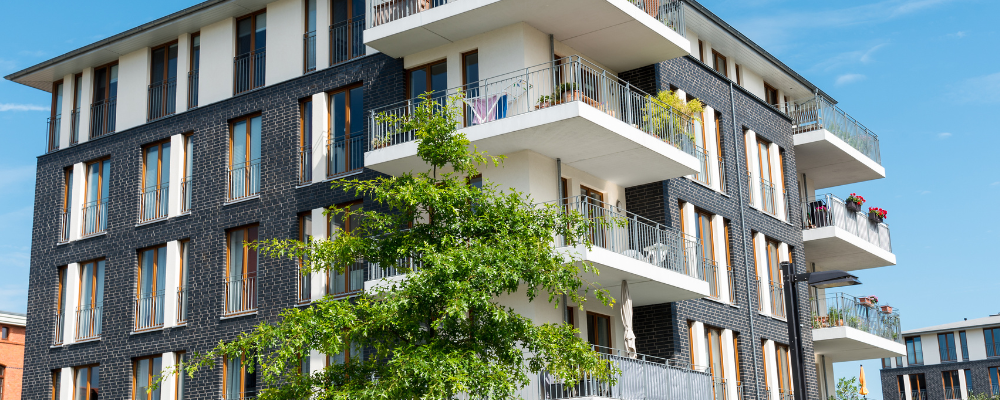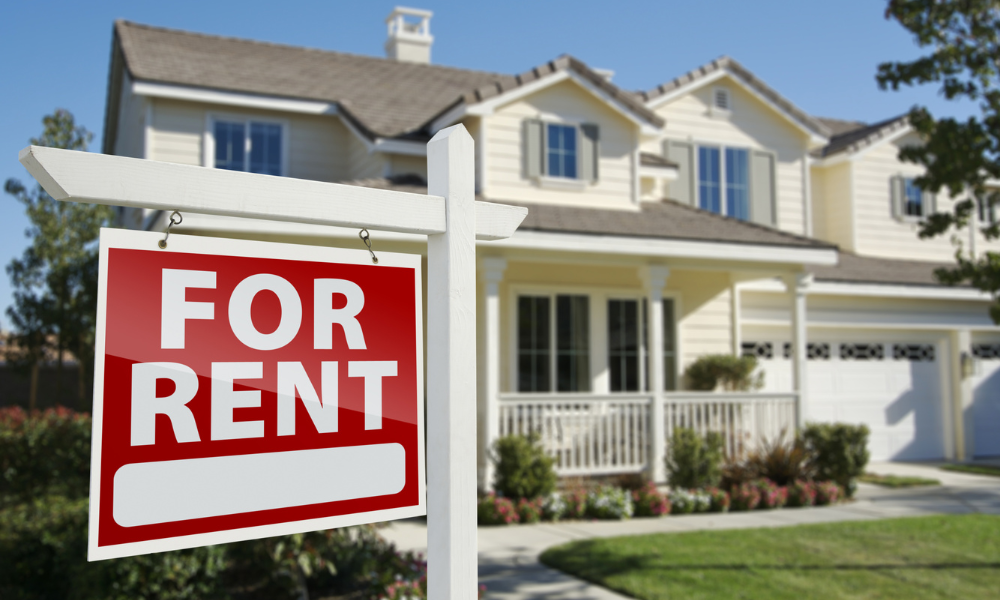The Short Answer
There are many financial vehicles that you can use to fund your retirement, however one of the most solid alternatives is rental property. Now, the next logical question would be how many rental properties does one need to be able fund their retirement?
It all starts with working out your retirement goals and then using the rental property retirement formula and/or cash on cash return to discover how much you’d like to receive when you retire and how much you’d need to invest in rental properties then. From there, you can evaluate each rental property, to see whether it fits into this, using the 1% or 50% rule.
Table of Contents
How To Work Out How Many Rental Properties You Need To Retire
Real estate has long been considered a successful way to generate wealth and achieve financial freedom. Rental properties are one of the vehicles to do this, by generating rental income in a passive investing strategy. Financial comfortability is a goal for many, for retirement and this can certainly be achieved through rental property investment.
The next question you may be wondering about is how many rental properties to retire? Let’s take a closer look at the steps you can take to work out how many rental properties you may need to retire comfortably.

Step 1: Work Out Your Retirement Goals
The cornerstone of any good financial plan is solid goals, and this is the same for retirement. So, the first step in this process is to work out your retirement goals, based on the lifestyle you’d like to have. Take into account factors like your current age and the age you’d like to retire, your financial goals, the expenses you currently have and what you expect your retirement expenses to be.
Whether you’d like to have a quiet retirement, or you’d like to travel the world, defining your goals is a key step to creating a retirement plan. This means working out how your financial situation should look and therefore what you’ll need to do to achieve this. This will dictate the total amount of income you’ll need to generate from your rental property investments and therefore the number of rental properties to invest in.
Part of creating a comfortable retirement is to understand all the passive income sources you will have at that time. Social security pensions, any investments you may have and anything else that will contribute to your income. The gap that rental properties will need to fill is a vital piece of information in your financial plan.
Step 2: Rental Property Retirement Formula
The next step is to use the rental property retirement formula to work out the rental income that could be earned from each property. Each person has different retirement expenses, such as healthcare, leisure activities and unforeseen circumstances. Add to this that each property generates a different rental income amount, and this is where the rental property retirement formula comes in.
The rental property retirement formula is as follows:
Income = Money x Cash on Cash Return
or
I = M x C
Your cash on cash return is essentially your portfolio income divided by the amount you have invested in it. Using this formula gives you a good indication of the income you’ll need to receive from your rental properties, in order to make the amount you need to retire. By this, you can deduce how many rental properties you’ll need to generate the total income you need.
For example…
Let’s say you’d like $5,000 per month in rental income for your retirement (or $60,000 per year), and you’ve determined that the average cash on cash return you’d like is 8%, then you can use these numbers to work out how much you’ll need to invest in rental properties, which would be $750,000.
I / C = M
$60,000 / 8% = $750,000
With a target income of $60,000, let’s say that homes are selling at around $250,000 in your target market, with a cash on cash return of 6%. This means you’d need 4 rental properties to achieve your financial goal for retirement.
$250,000 x 6% = $15,000 cash on cash return per property
$60,000 / $15,000 = 4 rental properties (with an average price of $250,000 each)
Step 3: Evaluate Rental Property Returns
The next step in your rental property retirement plan includes evaluating each rental property’s returns. Potential properties need to be analyzed based on rental yields, appreciation potential, and associated costs. Calculating your expected cash flow is a crucial part of making sure that the rental properties you purchase are going to align with your future financial goals.
If you’re going to buy rental properties, the trick is to work out the returns so that you can set yourself realistic profit expectations to plan for your retirement. This means looking at the cash flow of the property, taking into account the estimated gross rental income, vacancy loss, repairs, property management (including a property management company), expenses, mortgage loan amount and interest.
This will give you a projected monthly profit before tax, which you can use to determine if the rental income is likely to be sufficient to make the property cash flow positive and therefore profitable.

Step 4: 1% or 50% Rule
When you’re deciding which properties are going to be profitable enough to help you achieve your financial goals, there are 2 rules which may come in handy. The first is the 1% rule which states that the rental income should be around 1% of the home’s purchase price, in order to cover the expenses and provide an income. For example, if you bought a rental property for $200,000, then the rental income should be at least $2,000 per month.
The other rule is the 50% rule, which indicates that you can safely assume that half of your rental income will go towards covering your expenses, such as maintenance. You can use this rule, alongside the 1% rule to figure out whether a property is going to generate enough income to cover its expenses and leave enough for a profit. If not, it may not be the best investment for your retirement, as a negative cash flow is not sustainable.
For example…
Using these rules, a real estate investor would need 5 rental properties that meet both rules, to generate $5,000 income per month for their retirement.
Step 5: Establish A Timeline
Establish a realistic timeline for generating income and acquiring enough properties is vital. This will help you set realistic expectations for your investments and align your strategy with your retirement goals. It’s important to periodically reassess your portfolio, market conditions, and personal goals. Be prepared to adjust your strategy as you go, based on ever-changing conditions.
Why Do Most Investors Use The Cash on Cash Return Method?

The cash on cash return method is popular among real estate investors for several reasons, not least of which is the fact that it provides a straightforward and practical way to assess the profitability of a rental property. The cash on cash return method provides a real estate investor with the following benefits:
- The actual cash generated by the investment is the focus when using the cash on cash return method, instead of the property’s overall value. Which means that the property will be generating an income from the start.
- The cash on cash return method is an easy calculation to do. The calculation is done by dividing the annual cash flow (before tax) by the initial cash investment.
- Investors can gain a good understanding of the risk associated with an investment by using the cash on cash return method. By focusing on the cash that is invested, investors can evaluate the return relative to their initial capital and use this to help them manage risk.
- The cash on cash return method takes into account the impact of leverage by considering the actual cash invested. This is particularly beneficial for investors who use financing to acquire properties, as it provides a more accurate representation of the return on the cash they personally put into the investment.
Alternate Ways To Calculate How Many Rental Properties You Need To Retire
While the cash on cash return method is a popular one, there are other methods you can use to determine how many rental properties to retire.
Alternate Method 1: Capitalization Rate
The capitalization or cap rate, is calculated by dividing the rental property’s Net Operating Income by its current market value. For example, if a property’s NOI is $18,000 and the property is valued at $250,000, the cap rate would be 18,0000 / 250,000, which is 0.072 or 7.2%. This percentage is an indicator of the property’s potential ROI and allows for easy comparison between properties.
Once you’ve worked out the cap rate of the rental properties, you can determine which will be the most profitable and use this to figure out how many properties you need to achieve your ideal retirement income.
Alternate Method 2: Passive Income Coverage
Calculate the total amount of passive income that you’ll receive as your retirement income. You can include your rental properties in this. Determine how much you will need to receive in order to meet your goals, for example 80%. Factor in your other income sources. This approach provides a tangible goal for your real estate investments in relation to your overall financial needs.
Alternate Method 3: Lifestyle-based Analysis
This method involves first analyzing the lifestyle you’d like to lead and then estimating the amount of retirement income you’d need to sustain that lifestyle. Working backwards from there to determine the number of rental properties can be done, once you know the amount of retirement income you’ll need. This method aligns your financial strategy with your personal aspirations.
What Are The Tax Implications Of Owning Multiple Rental Properties?

If you are planning on owning rental properties in the plural, this may require further investigation. There are tax implications to owning rental properties, and as much as this is an excellent way to generate the retirement income you’ll need, you’ll also need to look at how your tax will work.
The silver lining is that the IRS allows rental property investors to take advantage of tax deductions that include interest, insurance and various other expenses. One of the largest expenses you’ll incur with multiple rental properties is maintenance, which can be deducted annually for each property. You can also deduct your real estate taxes in full, the mortgage interest on each rental property, and include property depreciation for each investment.
While your taxable net income is higher on rental property, depreciation can be used to reduce this. You will also have higher expenses overall as your rental property taxes will be higher, but you can reduce these by keeping track of your expenses and deducting as many as possible.
Are Rental Properties The Best Way To Fund Retirement?
Owning rental properties can be one of the most powerful ways to earn a solid retirement income through a stable, positive cash flow. While there may be other vehicles to earn an income for retirement, rental property is one of the most sustainable. Ultimately the goal of using rental properties for retirement is to create a source of diversified income that is a steady stream and offers the chance of appreciation.
These are the benefits of funding your retirement with rental properties:
- Steady income: Rental properties provide a steady, passive income stream through rental income which is great for cash flow. Well-managed properties that are in locations where there is a high demand can generate a larger amount of income.
- Property appreciation: Real estate typically appreciates over time, and this is in the region of 4% per year. In other words, aside from the rental income received from the rental properties, they will also appreciate in value over time. This allows for capital gains when a rental property is sold and contributes to the overall value of a retirement portfolio.
- Tax advantages: Real estate investments can offer good tax benefits to those who invest. These include deductions for mortgage interest, property taxes, and certain expenses. If you can understand and leverage these benefits, your overall returns can be increased and this makes rental property ownership even more beneficial as a retirement funding venture.
- Hedge against inflation: Real estate values and rental income tend to rise with inflation, providing a potential hedge against the eroding effects of rising prices over time. This can help improve cash flow during times of economic trouble, as rental property income holds the proverbial fort.
The best way to fund retirement depends on each individual’s circumstances. This includes how much money they need for retirement, whether they’d like an active or passive investing strategy, what their tax situation is like, and more. As such, working out how many rental properties you need to retire will depend on your goals.
Additional Tips For Growing Your Rental Property Portfolio
- Keep yourself updated on both local and national trends in the real estate market. Engage in comprehensive research on potential investment locations, taking into account elements like employment expansion, population shifts, and ongoing development projects. Recognizing emerging markets can open up avenues for potential growth in your rental property investments, and ultimately an improvement in cash flow for rental property income.
- Stay focused on your long-term vision.
Funding your retirement will require patience and a long-term vision that you will need to stick to. Develop clear financial goals for your retirement that include a target cash on cash return, and a plan to achieve this, and then stay the course. - Be adaptable and work with market changes.
The markets can change with any shifts in economic conditions, interest rates, and demographic trends. To grow your rental property portfolio, you’ll need to adapt to these changes, which means being flexible with your approach to capitalizing on the changes. - Efficient rental property management is key.
To maximize your returns and minimize rental property vacancies, it’s vital to make sure that your rental properties are adequately managed. A well-managed portfolio attracts and retains tenants, ensuring a steady cash flow for your retirement income. You may want to outsource to a property management company if handling it personally becomes challenging.



